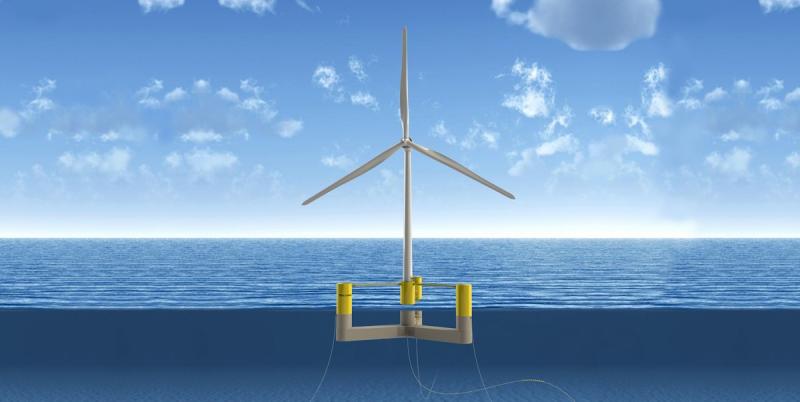Earth Day is also Ocean Day: The environmental and climate benefits of offshore wind
“After 80 years of studies warning that carbon emissions are destroying our environment, the danger is now at our doorstep. The Gulf of Maine is warming faster than almost any other saltwater body in the world, driving our lobsters up the coast. Our coastal waters are growing acidic; temperatures are fluctuating, and sea levels are rising, endangering our shellfish industry. Our forests are less suitable for spruce and fir and more suitable for ticks. Climate change is threatening our jobs, damaging our health and attacking our historic relationship to the land and sea. Tonight I say, enough. Enough with studies, talk, and debate. It is time to act!” – Governor Janet T. Mills, 2019 Inaugural Address
New England Aqua Ventus, LLC (NEAV), currently developing the offshore wind demonstration project near Monhegan with floating platform technology developed by the University of Maine, has assembled the following information about the environmental and climate benefits of the project.
The Gulf of Maine is warming faster than 99% of the world's oceans. In the last year, the hottest ocean temperatures in the Gulf of Maine in a single day were recorded. It has already begun to affect the ecosystem, and more impact is anticipated, reported Scientific and Technical Subcommittee of the Maine Climate Council. Recent temperature changes in the Gulf are causing it to begin to lose its subarctic characteristics and key species in the food chain.
For instance, the Gulf of Maine Research Institute has predicted a 62% drop in lobster population by 2050. The best case for Maine by 2050 is that the southern coast will have an ocean climate similar to what Rhode Island has today – around 2.7 ºF above the 1976-2005 baseline. If carbon emissions aren’t sufficiently reduced, even the waters of Downeast Maine will feel like Rhode Island – temperatures exceeding 5.4°F above that baseline by the end of the century.
In response, Maine has developed a climate plan that, among other actions, sets a target of meeting 80% of the state's electricity needs with renewables by 2030, with offshore wind supplying a portion of that power. The first step in that direction is deployment of the demonstration turbine near Monhegan.
The demonstration wind turbine's contribution to Maine's clean energy and climate objectives will be a modest but tangible example of the environmental benefits that offshore wind can provide. The turbine off of Monhegan will interconnect with the Central Maine Power system in Lincoln County and serve Maine electricity consumers. According to the most recent data from U.S. Energy Information Administration, the turbine will generate enough electricity to meet the annual needs of the equivalent of approximately 5,465 Maine households or around 35% of the households in Lincoln County. In terms of its greenhouse gas reduction impact, operating the Monhegan wind turbine will be like taking 6,263 passenger cars off the road every year; recycling 9,883 tons of waste instead of landfilling it; or replacing 1,101,251 incandescent light bulbs with LEDs. The demonstration project will displace 63.9 million pounds of carbon dioxide equivalent annually.
The deployment of additional wind turbines elsewhere in the Gulf of Maine, including the research array proposed by the Mills Administration, would multiply these environmental benefits. Through science and research, the array will determine how best to protect the Gulf of Maine’s ecology, marine users, and Maine’s overall interests as the federal government and other states plan commercial offshore wind projects in the Gulf.
Event Date
Address
United States




































